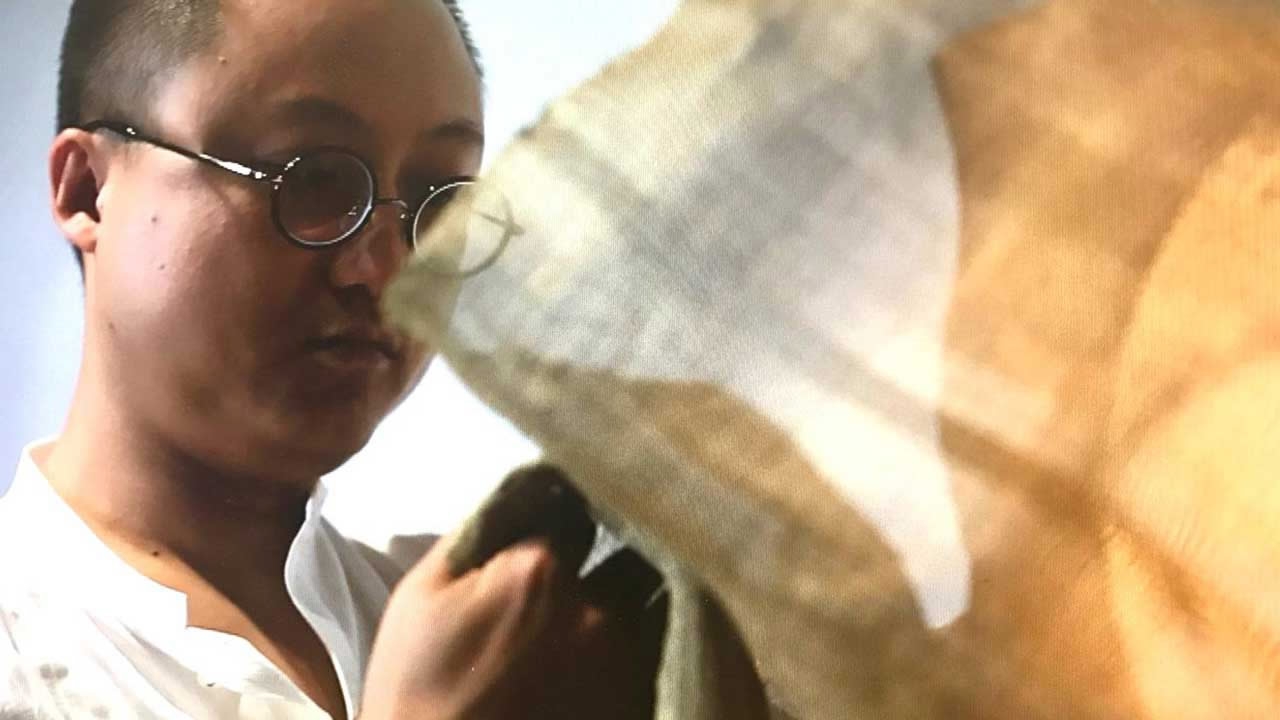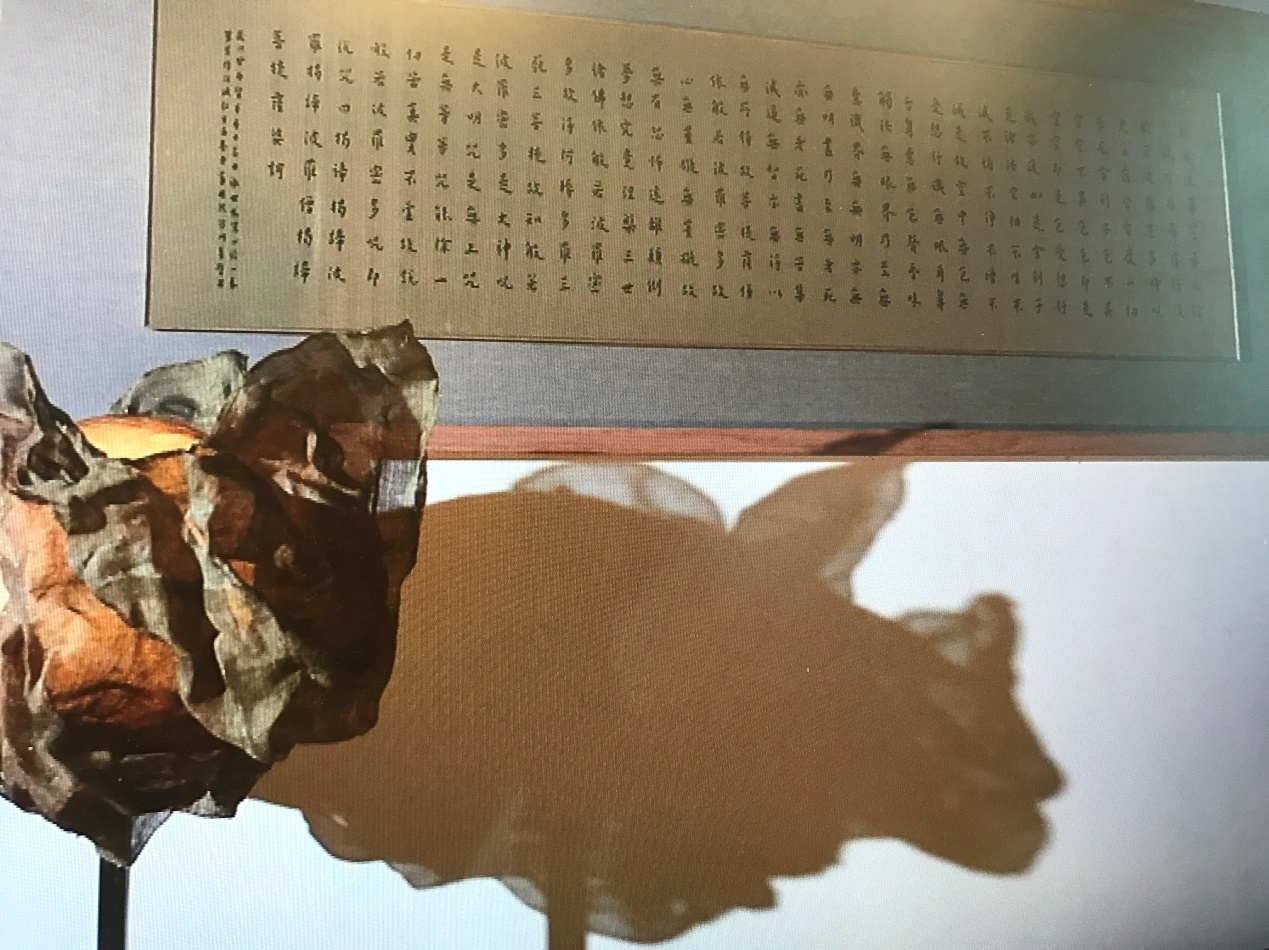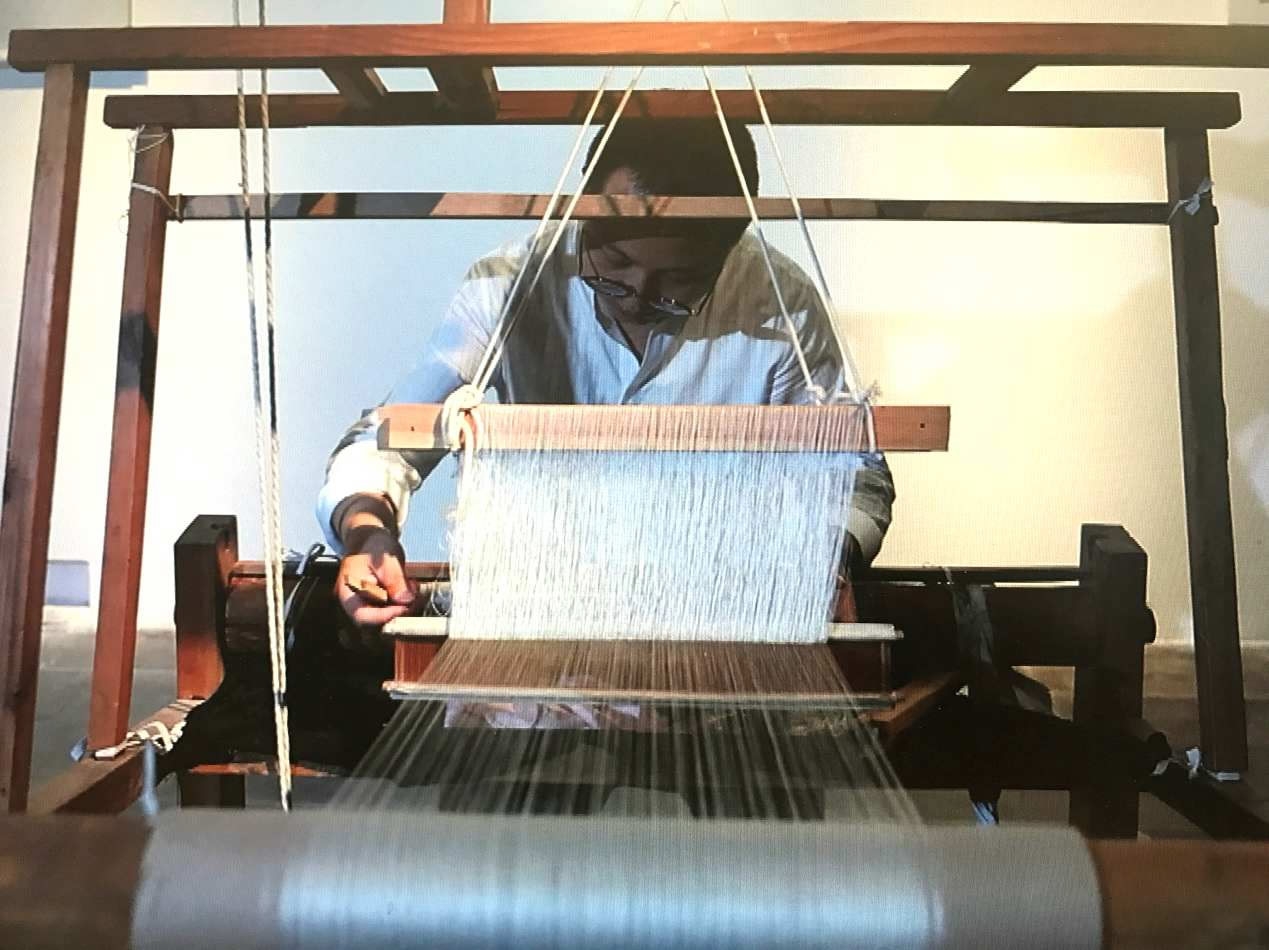
Culture & Sports
19:22, 20-Jul-2017
From Hermes to the Silk Road: Chinese designer revives Kesi silk

By CGTN's Sun Wei, Yang Ran
Kesi, also known as "Cut Silk", is a style of traditional Chinese silk tapestry with cut designs.
Originating in Suzhou, Jiangsu Province, more than 2,000 years ago, Kesi has been listed as a National Intangible Cultural Relic.
Recently, young Chinese designer Fan Weiyan won the 2017 International Furniture Design Award with his Kesi work, pushing the ancient craft back into the international spotlight.
His "Clouds" floor lamp won him the title “Star of Tomorrow” at the competition in Milan.
It’s made of an innovative material developed from cut silk.

The award-winning floor lamp “Clouds”. /CGTN Photo
The award-winning floor lamp “Clouds”. /CGTN Photo
“Memory Silk is a kind of new material we’ve developed. We blend metal and silk together to make a whole new fabric. It can be shaped and reshaped according to your intentions. Our innovation is based on ancient handicraft,” Fan explained.
One inch of Kesi silk equals one ounce of gold
Developed during the Tang Dynasty (618-907), Kesi tapestry reached its pinnacle height during the Ming and Qing (1368-1911) dynasties.
For its extremely detailed pictorial designs, lightness and clarity of double-sided pattern, Kesi products were especially adored and used by imperial families.
Unlike continuous weft brocades, each color in Kesi is woven from a separate bobbin, making the style both technically demanding and time-consuming.
“It was actually introduced to China from western Asia along the Silk Road. Then the ancient Chinese added their creation and innovation and lifted the technique to a new level. So I always regard Kesi as a fruit of the collaborative wisdom of the people along the ancient Silk Road,” Fan said.

The art of Kesi was first developed in the Tang Dynasty. /VCG Photo
The art of Kesi was first developed in the Tang Dynasty. /VCG Photo
Fan started to work for Hermes Paris in 2004 after graduating from the Art and Design Institute of Mulhouse University.
An experience there led him to recognize the necessity of reviving the traditional Chinese craft.
“The biggest idea I got at Hermes is the idea of inheritance and innovation of old crafts. At that time, Hermes’ products partly originated from Vietnam’s lacquer wares and India’s leather weavings. I then asked my boss, why we don't have any styles of Chinese crafts? He told me that there were serious problems of copying in China which was not good for the protection of our products. These words sent a chill to my heart. It made me recognize that I should come back to China. There are so many excellent traditional crafts in Suzhou alone. We should show the world our culture,” Fan said.
Fan's designs break the traditional form of dragon, flower and bird subjects. The ink painting featuring southeast Chinese landscapes and music scores of the song “Jasmine Flower” could both be vividly presented in his Kesi works.
When encountering difficulties, Fan turned to seek inspiration from some old craftsmen.
“I told him that in order to do well in Kesi, we need great patience and perseverance. But what’s the most important is savvy,” Kesi inheritor Tan Shui’e said.
Nowadays, Fan is leading his team to explore a wider application for cut silk. They have broadened the boundaries of its utility, bringing to life some Kesi articles of home furniture.
The designer noted that innovation means better inheritance, and preserving this cultural relic through the power of design is his responsibility.

SITEMAP
Copyright © 2018 CGTN. Beijing ICP prepared NO.16065310-3
Copyright © 2018 CGTN. Beijing ICP prepared NO.16065310-3